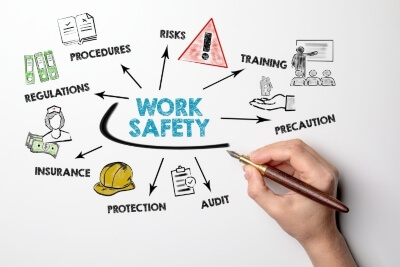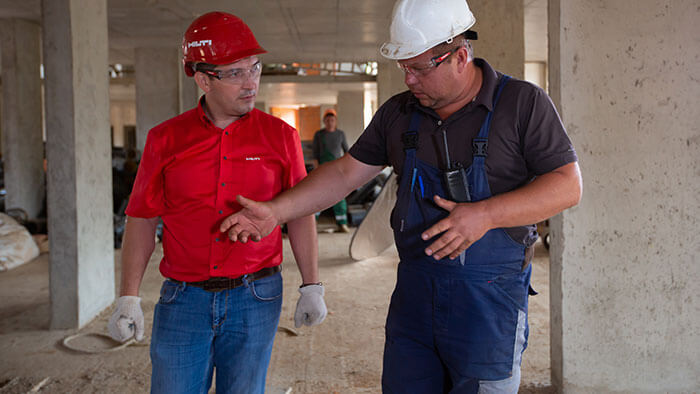No matter what your business does, it’s likely that the current pandemic has impacted it.
Your JHSC can play a vital role in helping you manage the ever-changing requirements for employers to keep their workers safe. JHSC members have been trained in conducting hazard risk assessments, identifying ways to keep workers safe, and being that go-to person for worker safety questions.

Most workplaces have changed since the beginning of 2020.
Many have seen an increase in work volume while adhering to strict safety guidelines, while others have seen their operations shut down and then re-opened. We have never seen such a need for JHSC members to be involved in worker safety, as we have seen in the past nine months.
But we are also surprised to see that some companies have not taken advantage of these trained persons to help develop safe work plans or assist in doing a COVID-19 risk assessment.
As you may know, workplaces that employ more than 19 workers are required to establish a Joint Health & Safety Committee, and those members need to be certified by an MLTSD approved training provider.
When asking participants, the question, “So what has your JHSC done in the past year or so?” the response I get the most often is, “we have done our monthly inspections, have our scheduled meetings and not much otherwise.”
If I were an employer, knowing all the time and money it takes to certify a JHSC member, I would want them to do as much as they can do. I would have them conducting risk assessments on all jobs that have potential hazards, develop safe work instructions to ensure our workforce is working safely, and help build a more favourable safety culture.
You can not argue with the statistics that show that a workplace with a positive, safe work culture has fewer accidents, incidents and near misses than those that don’t have the same culture.
The following are seven things that you can do during the pandemic to utilize your JHSC representatives better.
1. Keep your JHSC members in the loop as to what is going on
Have one of them monitor the changing landscape when it comes to protecting workers from infectious diseases. Have them audit any of the controls you have put in place to ensure they are still followed.
2. Add something in your monthly safety inspection to measure your COVID-19 safe work procedures’ effectiveness
For the most part, this is dependent on workers following simple rules like washing your hands, wearing PPE and watching workers do their work.
Some think that this should be a supervisor’s job, and they are right, but what if the supervisor is not looking at the workplace the same way as a safety rep?
3. Encourage your JHSC members to get involved in a constant evaluation of your current policies and procedures
You may agree that the standards set out by the government change daily. You may not want to wait until the end of the month to conduct an assessment of your current controls. Encourage your JHSC members to initiate a discussion to address the strength of your existing controls
4. Consider how you will communicate the changing information that workers need to know
Hanging a revised policy that is multiple pages long on the wall might not be a good idea considering how many people may touch it to read it. Consider other ways to communicate the changes. Does management communicate policies and procedures to workers? Would there be any value in getting your JHSC members to communicate safety-related information?
5. Is there a possibility that your JHSC members may be hesitant to get involved in conducting risk assessments or making recommendations to the employer?
If so, we should ask ourselves, why? Is it that they may feel that they may be overstepping their role as workers when identifying gaps in the safety protocols? Perhaps they don’t want to upset my employer? Could it be that they don’t think they have much to offer because they don’t understand what needs to be addressed?
If this is the case, go back to item 1 above and allow them to learn about the hazard, in this case, COVID-19. Keep in mind that Industrial Safety Trainers support every JHSC member we train as those persons can contact our office and ask as many questions as they like at no cost to the employer. Trainers at IST are more than willing to offer direction to someone asking questions.
6. Maintain regular communications
At our company, we have a board room that may not be in line with the safe distance guidelines (depending on group size), even if wearing a mask, so we have changed to having our JHSC meetings via Zoom. It is a great way to meet and it’s safe. The best part is you can record the meetings and everything that is said.
You can share reports that everyone can see (saves from printing many documents and passing them around the table as we do in some meetings). Be innovative when it comes to having discussions about safety and compliance, and don’t be afraid to consider a virtual meeting platform.
7. Ensure that the business is still conducting monthly safety inspections
Even if nothing is going on or the work has been significantly reduced, it’s better to show an inspection that doesn’t have much to report rather than not doing anything at all. If you go to https://thesafetybus.com/free-stuff/ , you can find a sample Infectious Disease Policy, Pandemic Continuity Plan, and a COVID-19 Risk Assessment document to use.
Whether you have these policies and procedures in place already or not, they are great resources to get you started or compare with your existing policies and procedures.
Industrial Safety Trainers are here to support your business. We have dedicated staff members on standby to answer your questions or concerns. It’s free, and you would be surprised by what you can learn.
Randy Dignard
Senior Safety Consultant





